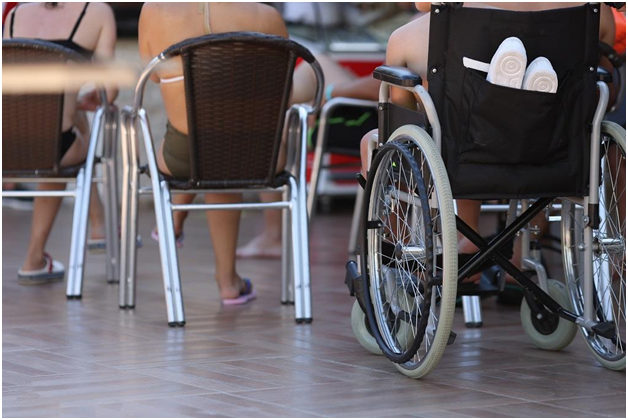Does Cerebral Palsy Get Worse with Age?

Hi, I am Betty Knight, Owner of this site! I…
When we talk about the struggles of living with cerebral palsy, children come first to mind. But there is currently a growing number of adults living with the condition as life expectancy within this group has greatly improved. Families of patients are aware that the life of a child with cerebral palsy won’t be easy, but few caregivers know exactly what to expect in growing old with this disability.
What is Cerebral Palsy?
Cerebral palsy is an umbrella term describing a set of neuromotor issues caused by a non-progressive injury to a child’s developing brain which triggers a permanent motor deficit. Causes are diverse from clumsy doctors or nurses handling the delivery of the child to pre-birth infections and/or bad genes.
It is estimated that 2 to 3 newborns per 1,000 live births are affected by the condition, with 764,000 children and adults currently living with the neurological disorder. Cerebral palsy is one of the most important neurological issues affecting infants, along with mental retardation and epilepsy, and the number one childhood motor disability.
Two of the high-risk groups are preemies (at 32 weeks or less) and newborns with low birth weights (under 3.3 lbs).
Can Cerebral Palsy Be Cured?
Cerebral palsy does not have an official cure yet, but early diagnosis paired with the right treatment, including physical therapy and medication, can greatly improve the outcome. With therapy, some symptoms may subside, others may get slightly better, but the condition cannot be cured since the brain injury that caused it is permanent.
Does Cerebral Palsy Get Worse with Age?
Cerebral palsy doesn’t get worse as time goes by, but some of the associated symptoms may get worse if left untreated. Adults with cerebral palsy might be affected by the so-called post-impairment syndrome, a condition producing symptoms that mimic cerebral palsy’s own symptoms.
Post-impairment syndrome is a fairly common condition among adults with cerebral palsy. Identifying it can be difficult, as many of the symptoms mimic those of CP and other related conditions.
Post-impairment syndrome is a cluster of symptoms caused of years living with motor disability and other complications triggered by cerebral palsy. The most common symptoms of the syndrome include:
- Fatigue
- Loss of mobility (25% of patients lose independent walking late into adulthood)
- Distorted and/or painful joints
- Bone deformities
- Early onset arthritis (osteoarthritis)
- Strain injuries due to overuse
- Loss of muscle tone, weakness in the muscles
- Medication side effects
- Falls (as mobility issues get worse with age, the risk of slips and falls grows exponentially).
To prevent these symptoms from setting in, you need to work with various therapists throughout childhood and early adulthood. Physical therapy (PT), Occupational Therapy (OT), and sometimes medication can work wonders in keeping post-impairment syndrome at bay.
Without therapy, muscle stiffness and muscle shortness may get worse with time as part of the post-impairment syndrome. Spasticity can be prevented with the right medication, including botulin toxin shots. Deformed joints can be prevented or corrected with PT, mobility aids, and even surgical intervention.
Without proper intervention, the more aggressive cerebral palsy cases can lead to spinal disfunction, chronic neck and back pain, and even compression of internal organs, which might cut life expectancy dramatically.
Many cerebral palsy patients report losing mobility in late adulthood without intervention, so expect increased need for mobility aids such as wheelchairs as years go by even in mild cases of cerebral palsy.
According to a study, 44% of cerebral patients will experience deterioration of their ability to walk independently. More than 60% patients report fatigue, with 2 in 5 adult cerebral palsy patients reporting severe fatigue.
Takeaway
Cerebral palsy does not get worse with age and its symptoms can improve through the right medical approach. But the post-impairment syndrome is a real issue as it may affect a patient’s already limited mobility and may lead to bone deformities, chronic pain, and a plethora of other health complications.
Many of the post-impairment syndrome’s symptoms can be easily mistaken for cerebral palsy’s symptoms, but a medical professional can easily spot the difference.
Also, while cerebral palsy doesn’t get worse with age, the associated health issues and negative impact on the patient’s quality of life can easily translate into hundreds of thousands of dollars in medical bills and other out-of-pocket expenses.
Hopefully, a cerebral palsy lawyer can help with getting much needed financial relief if the condition was caused by another person’s negligence. However, you need to act fast as the state of limitations on birth injury claims is between 3 and 5 years from the date of the injury depending on the state.
Additional resources:
What's Your Reaction?
Hi, I am Betty Knight, Owner of this site! I am a 'nearing 30-year-old', happily married to 1 awesome man. We live in the beautiful tourist town of Franklin NY.



